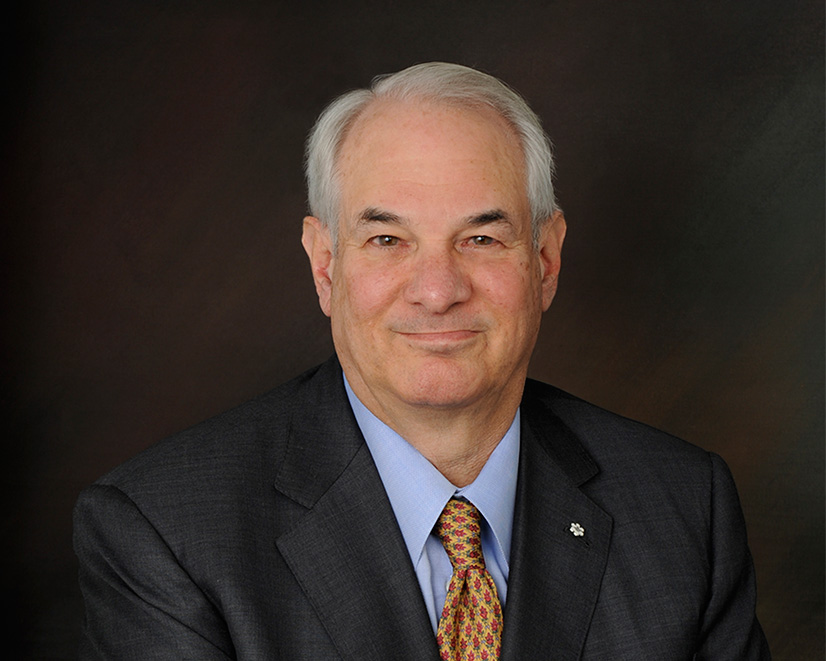Prominent civil rights lawyer Clayton Ruby says police have too much leeway to use excessive force because there is no will to punish officers who cross the line.

Canada’s Criminal Code allows anyone authorized by law, if acting “on reasonable grounds” to use “as much force as is necessary” in enforcing the law. While that wording is intentionally to general to cover different situations, Ruby says that vagueness, coupled with a lack of strong oversight, emboldens some police to act as aggressively as they choose.
“The terms are extremely general so they tend to bear whatever meaning the individual police officer wants to assign to it,” he says. “And in Canada, as in the U.S., judges and juries and police chiefs refuse to use these phrases to put a limit on police activity. They don’t charge the police and they acquit them when they are charged. It’s a sham.”
Ruby mentions U.S. police in reference to the last week’s grand jury decision to not lay charges against a white police officer after a fatal confrontation with an unarmed black man. New York city police officer Daniel Pantaleo faced indictment over the death of Eric Garner, who died after Pantaleo applied what some are calling an illegal chokehold manoeuvre.
Pantaleo’s lawyer says the alleged chokehold was an authorized takedown manoeuvre taught by the NYPD.
Prosecutor Daniel Donovan didn’t provide any details about how the jury reached its decision, but the incident still provokes questions over what constitutes reasonable force.
Canada has seen its own troubling cases of use of police force in recent years.
Last year, Toronto police fatally shot 18-year-old Sammy Yatim on a streetcar in, shooting him nine times — six after he hit the ground — then Tasered him.
And in 2007, the death of Polish immigrant Robert Dziekanski made international headlines when he died after five Taser shots from police at the Vancouver International Airport. The officers claimed they felt threatened when Dziekanski picked up a stapler.
Toronto lawyer Peter Rosenthal agrees that police get “too much leeway” to act aggressively and abandon genuine attempts at non-violent de-escalation.
Rosenthal represented the family of Michael Eligon, a 29-year-old mentally ill man shot dead by Toronto police in 2012 as he approached an officer while wielding scissors in both hands. He says police training promotes a “backward way of thinking” when it comes to dealing with potentially aggressive suspects.
He says despite many inquests and recommendations for police to try more verbal de-escalation of crises, they resort to force as the default option.
“[Police] exaggerate the danger and they don’t recognize that the best way of dealing with the danger is would be talking to the person,” he insists. “In many of these confrontations, there’s time for the officer to try talking to the person. It must be tried in my view unless there’s immediate danger.”
He agrees that stricter enforcement is needed.
“Prosecutions have been few and far between but even fewer than there should have been, in my view,” he says.
Last week, a Toronto police officer got a $50 fine and six months probation for assaulting a man sitting handcuffed in his cruiser. A judge agreed the officer went beyond reasonable force in that situation, but Ruby says the punishment is emblematic of a system that won’t restrain officers who cross the line.
“The judge refused to impose any real penalty and encouragement to [use excessive force] and worry about the law later,” Ruby says. “Courts are afraid to seriously punish police. They know they are going to be dealt with extremely leniently and they won’t suffer any consequences for it.”

 Canada’s Criminal Code allows anyone authorized by law, if acting “on reasonable grounds” to use “as much force as is necessary” in enforcing the law. While that wording is intentionally to general to cover different situations, Ruby says that vagueness, coupled with a lack of strong oversight, emboldens some police to act as aggressively as they choose.
Canada’s Criminal Code allows anyone authorized by law, if acting “on reasonable grounds” to use “as much force as is necessary” in enforcing the law. While that wording is intentionally to general to cover different situations, Ruby says that vagueness, coupled with a lack of strong oversight, emboldens some police to act as aggressively as they choose.